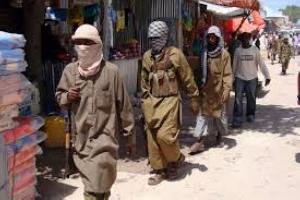It’s been almost a week since our nation’s historic elections which saw incumbent John Mahama lose by a massive margin.
There are many theories one could put forth as reasons why NDC lost the polls, or why the NPP won by such a margin.
Some of these reasons are fairly obvious with a sluggish economy being one of them. An interesting approach is to take a look at the data to see what the numbers say about why the polls turned out the way they did.
Prior to the elections, our forecast had projected Nana Addo to win by a slim margin. Second to a direct win by the NPP as the likeliest scenario in our models, was the probability of a runoff.
Wednesday’s vote came off without a hitch and by Thursday morning it was clear to us that the margin by which Nana Addo was winning, was much bigger than what we had forecasted. With roughly 98% of the data certified by the E.C, we decided to find out what the numbers say about this year’s outcome and what that means for either party moving forward.
The biggest learning from last Wednesday was that the NDC lost more than the NPP won. This was in many ways, John Mahama’s election to lose and the data points to three key factors that explain how he failed to retain the presidency.
Depressed voter turnout especially in NDC strongholds
The biggest factor in the NDC’s defeat was the extent to which voters did not turnout to vote. Last Wednesday’s voter turnout was the 3rd lowest it’s ever been since 1996. In 2012, voter turnout was at a respectable 79%. Four years later only 10.8 million voters showed up to vote, representing 68.2% of registered voters, a number that is roughly 10% lower than the 2012 polls.

If the voter turnout rate had remained the same from four years ago, we should have seen about 12.4 million voters last Wednesday, a number that is about 1.6 million votes higher than what the E.C has certified thus far. Looking at turnout at the regional level, 9 of the 10 regions recorded a drop in turnout, with the lone exception being the Brong Ahafo region which saw a 1.4% spike in turnout.

In the NDC’s strongholds of the Northern and Volta Regions, turnout dropped by 27% and 25% respectively, a combined figure representing over 480,000 potential votes. Per the E.C’s numbers Nana Addo beat John Mahama by over 1 million votes.
The 480,000 who did not show up to vote in these two NDC strongholds would have likely narrowed Nana’s win margin. Outside of the Northern and Volta Regions, the Greater Accra and Western Regions also recorded significant drops of roughly 22% each.
This 22% drop in turnout for both regions added up to about 700,000 votes! With these two regions being swing regions, one could assume the 700,000 voters would have voted not much differently from how the rest of their fellow regional citizens voted.
Adding the 700,000 in these two regions to the 480,000 we estimated for the Northern and Volta Regions, we calculate almost 1.2 million voters who did not show up to vote in the polls.
Turnout in the remaining regions was still lower than 2012 but not as significant as the numbers reported in the four regions highlighted above.
Given the fact that competition has historically been very stiff between these two parties, each missing vote counted towards making the final outcome a lot less competitive than anticipated.
The big question that arises then is why so many voters chose to stay at home rather than show up to vote? Was it voter apathy, poor education or perhaps voter suppression? Keep in mind though that is drop in turnout appears to be cyclical.
The trend line above points to a general decrease in turnout that has been happening every 8 years since the year 2000.
This is even more reason for an answer to be found to this pressing question of low turnout. One way to determine this will be a survey of voter enthusiasm, prior to and after the polls.
Of interest to pollsters in future elections is the idea that voter enthusiasm about the polls could be as telling of electoral outcomes as directly expressed preferences for the candidates participating.
If one builds a heat map of voter enthusiasm across the nation prior to the polls and maps the data to the 10 regions and their historical voting patterns, the resulting matrix could become a powerful indicator of likely outcomes on election day.
The Northern Region became more competitive
During the run up to the elections, one scenario we simulated as likely to play to the NPP’s favour was the Northern Region becoming more competitive (Read our final forecast here).
The key point to note here is that the Northern Region has historically been an NDC stronghold. In 2012, President Mahama won a little over 58% of the votes in this region, against Nana Addo’s 39%, representing a win margin of about 19% for the NDC.
Our scenario looked at the possibility of the NPP increasing their tally in this region by 5% and how that might tilt the elections in their favour.
In my simulation, a 5% shift in votes towards the NPP would have cut the NDC’s support down to about 53%, making the region more competitive, almost at the level of the swing regions.
Looking at the data from last Wednesday, the NPP won about 42% of the votes in this region, while the NDC carried roughly 54% of the votes. Combining this breakdown with the depressed turnout in this region, it becomes clear how the NDC could have lost by such a wide margin.
Another factor that contributed to the NDC’s massive loss was urbanisation.
Judging by population distribution, Ghana is now more urban than it is rural. Roughly 54% of our country’s population lives in urban centers.
Historically, the NPP has performed better in urban areas whilst the NDC has enjoyed a bedrock of support in the more rural parts of the country. With a rapid pace of urbanisation happening across the country, the NPP stands to benefit more than the NDC if historical voting patterns hold.
Last Wednesday’s outcome was yet another instance of the urbanisation effect in our presidential elections.
In the major urban centers in the Greater Accra, Ashanti and Western Regions, the NPP won the majority of seats. As more and more Ghanaians move to urban centers in the coming years, the NDC will be hard pressed to win elections by a margin as large as that of the NPP.
Looking through election data from 2000 to date, one startling effect of urbanisation becomes immediately clear: when the NDC wins, it wins by a small margin; when it loses, the margins are always huge. The same cannot be said for the NPP.

There are many more reasons that account for last Wednesday’s election outcome. Had this year’s voter turnout matched the 2012 elections, the result would have been a lot more competitive than what we witnessed. Looking ahead, both parties will be wise to heed the warnings captured in what the data says about the final vote tally.
For both parties, over 1 million voters chose to sit at home rather than vote. For the NDC, urbanisation will continue to pose challenges to the party’s electoral fortunes if changes are not made to win over more support in the key urban centers of the country.
Additionally, the Northern Region could slip away into the swing region basket if the new NPP government is successful in addressing many of the challenges faced by citizens in that region within the next four years.
For the NPP, last Wednesday’s outcome has proven that Ghanaian voters will not hesitate to remove an incumbent from office if their expectations are not met. The ball is now in their court. We all wait to see how governance will unfold in the next four years.
General News of Tuesday, 20 December 2016
Source: vote233.com



![Declan Rice shouting at Partey [L] Declan Rice shouting at Partey [L]](https://cdn.ghanaweb.com/imagelib/pics/372/37287055.295.jpg)









